Voice search is a user-friendly technology that has seamlessly integrated into smartphones and other connected devices. Think Amazon Alexa, Google Home, and Apple’s Siri. It allows the user to communicate their search queries verbally to a virtual assistant and get search results on their device without the need for typing. AI is being integrated into voice search, making the search tool even more effective and efficient. This intuitive and convenient feature is rapidly gaining popularity, making it a crucial aspect of a comprehensive SEO strategy.
Looking to refresh your marketing strategy for voice search?
The popularity of voice search-enabled devices has surged in recent years, presenting a golden opportunity for businesses to stay ahead of the curve. Consumers are interested in completing more and more tasks directly through their smart speakers powered by voice search. Interest in making online purchases in the United States using voice assistant devices has increased from 27% in 2022 to nearly 49% in 2023, based on most recent available data.
Overall, in 2024 50% of all daily searches were done through voice, compared to 40% of all searches being done through voice in 2020. As new technologies, particularly Gen AI, are integrated into voice search, consumer use of voice search will continue to increase. Adapting to this rising trend of voice search can give you a competitive edge.
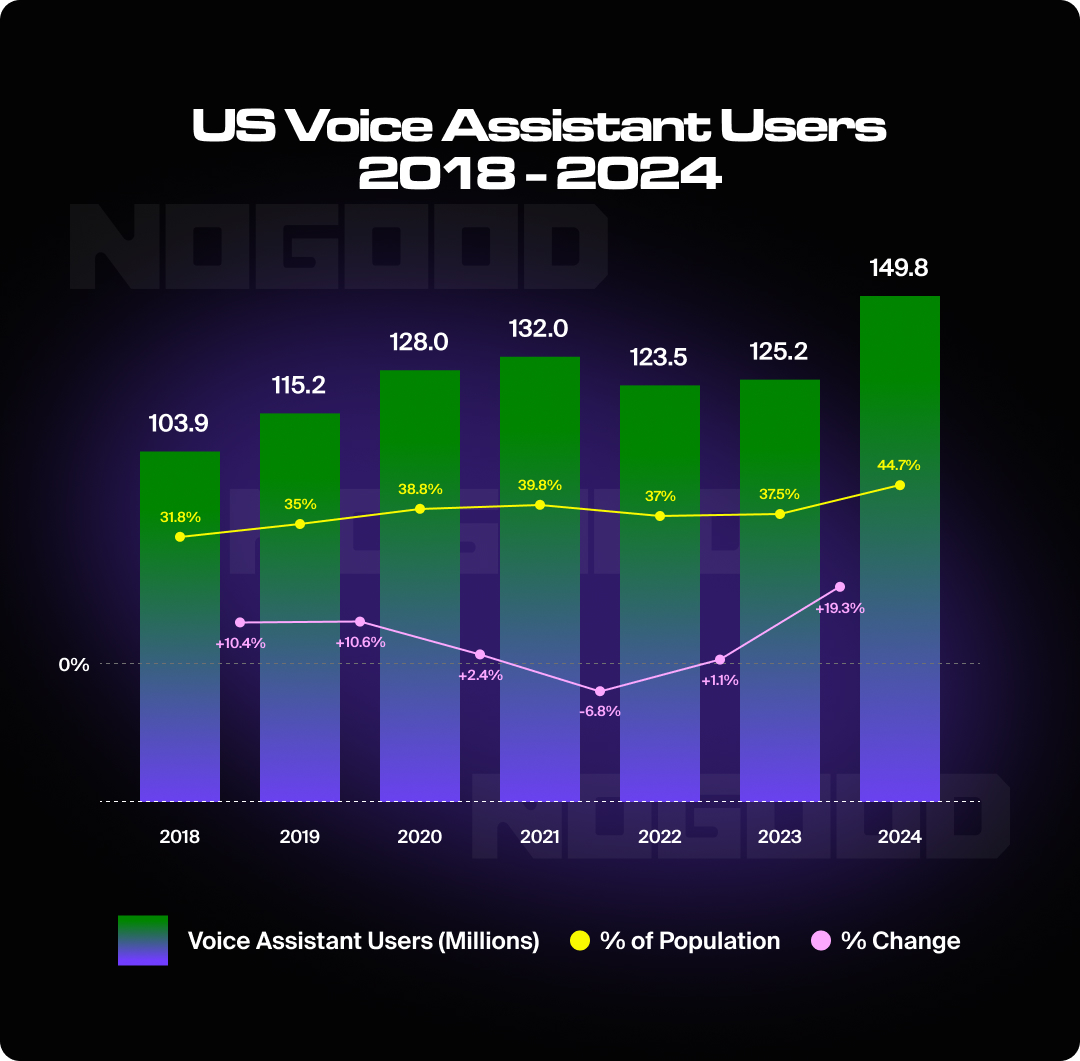
This guide provides an overview of voice search and its workings and equips your brand and SEO professionals with tools for leveraging voice search in your search strategy. It offers quick tips on optimizing your website for voice search, leading to increased traffic and better user engagement.
In 2013, Google significantly updated its search algorithms with a major update called ‘Hummingbird.’ This change shifted the focus of natural language processing from lexical (word-based) to semantic (meaning-based), allowing search results to be more contextually relevant to the user’s query rather than just a collection of keywords.
The groundwork laid by Hummingbird prepared Google to move into a more complex way of searching. In recent years with the introduction of the multitask unified model in 2021, Google updated its natural language processing capabilities. Currently, Google uses a combination of natural language processing and semantic search. Additionally, it uses the Gemini model to power its AI overview directly in the SERP. Understanding Google’s evolution of search is essential. By understanding how search is conducted, it’s easier to apply the same SEO techniques as used in a standard Google search to a more abstract form: voice search.
How Does Voice Search Work?
Voice Search operates on speech recognition technology, which processes spoken queries. When a user speaks into a smart device, the voice recognition software interprets the speech, formulates search requests, uses algorithms to decipher the searcher’s intent, and returns relevant results. This sophisticated process is the backbone of voice search technology.
With the advancement of artificial intelligence and machine learning, voice search has become increasingly more refined. It can recognize complex queries, allowing these smart devices to respond to user requests with great accuracy and speed.
Not only is voice search more accurate, but AI allows voice search to be a more human-like interaction. Users prefer having the ability to ask questions in a conversation format instead of using fragmented sentences. Because of this, natural language processing should be an essential part of your SEO strategy.
What is Voice Search Optimization?
Voice search optimization is an SEO practice of creating content and positioning your brand to outperform your competitors by showing up in voice searches. Since voice search is integrated into individuals’ daily lives, it’s more important than ever to optimize your brand for this modality of search.
Voice search optimization is a type of answer engine optimization. Answer engine optimization is optimizing your brand’s content to be the most recommended brand as per large language models. Voice search is an answer engine, but voice search optimization is how to specifically position your brand to be the number one preferred brand in voice searches.
In order to get the most out of voice search, your first step is to understand the different brands of voice search assistants so as to best leverage their capabilities to benefit your brand.
Most Common Voice Search Assistants
There are three main voice search assistants that are the most popular in the market. Each of them pulls information from different places. Amazon Alexa is used by approximately 25% of users in the US, and Apple’s Siri and Google Assistant are each used by 36% of users in the US. Understanding the importance of each voice search assistant is an essential first step in understanding answer engine optimization, specifically for voice search optimization. The table below outlines what sort of information is relevant to each specific voice assistant and where the information is collected from.
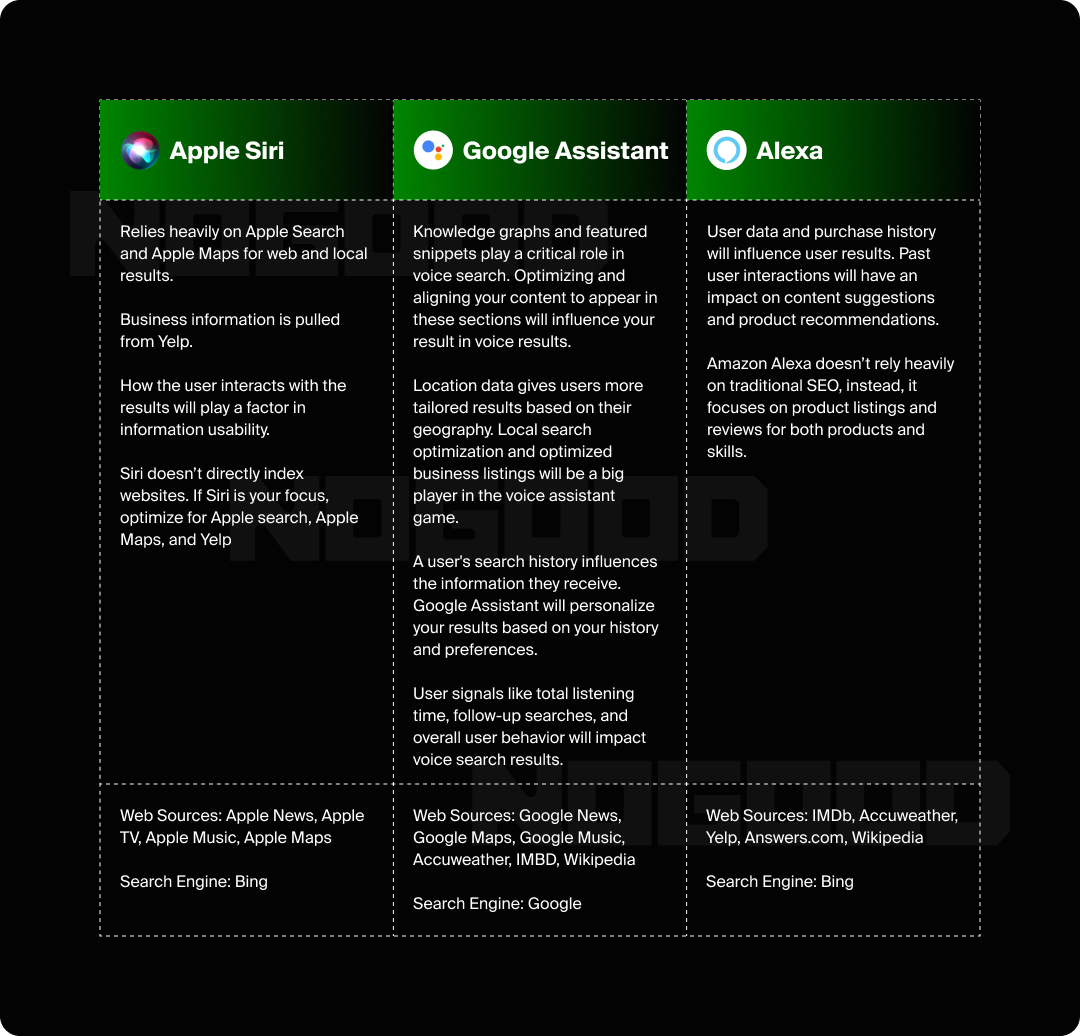
The next step is to develop a strategy for optimizing each of these different voice assistants through keyword strategies, writing copy, SEO location targeting, and website optimization strategies.
Keyword Strategies for Voice Search
By incorporating specific keywords into your search campaigns, you can ensure they’re picked up by users’ voice searches. The keywords used in voice search campaigns are more natural language-based, making them easy to understand. Over 80% of voice searches are expected to be conversational rather than traditional by the end of 2024. There are four types of keyword categories that you can use to improve your voice search ranking: question-based keywords, location-based keywords, search terms as a reference, and user intent keywords.
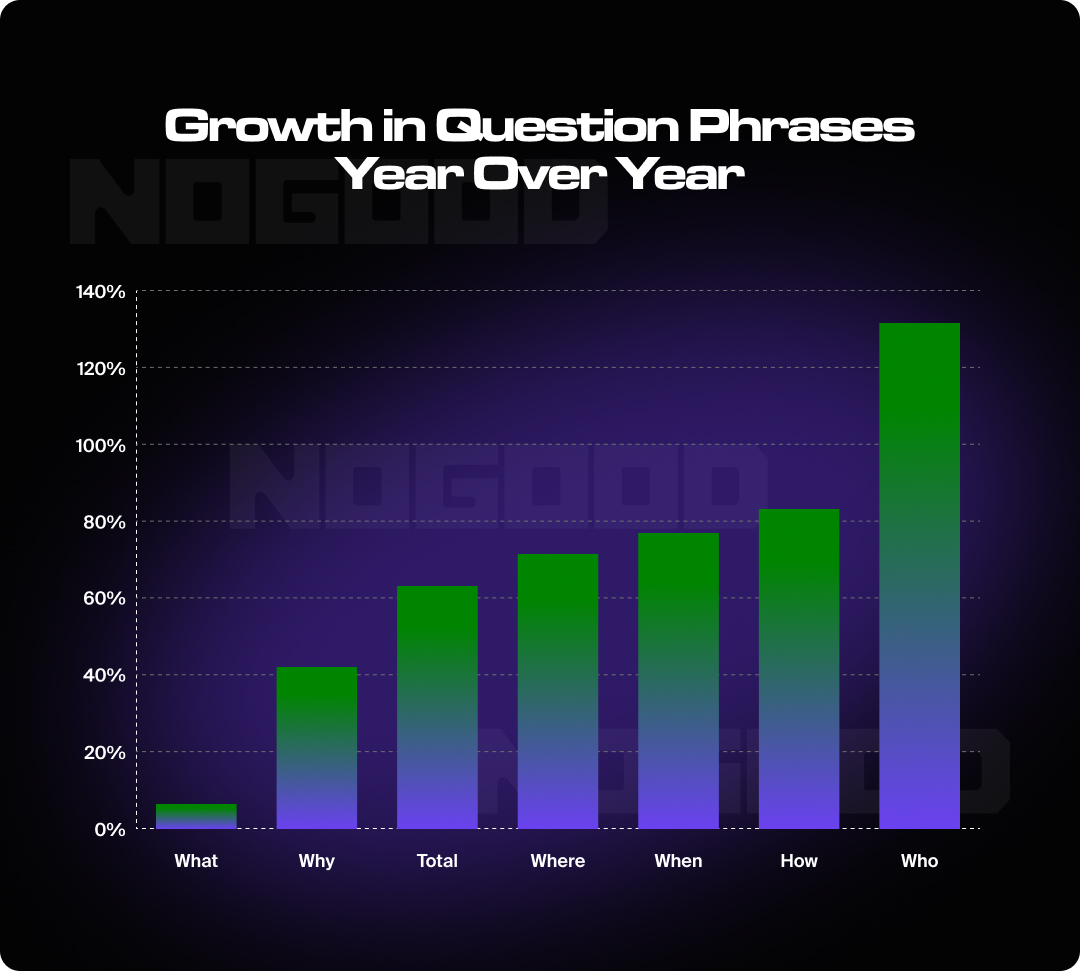
In addition to the growth of question-based keywords, specific keywords such as “best,” “easy,” and “free” are expected to increase by 20% by the end of 2024.
Question-Based Keywords
A lot of queries for voice search are long-tailed and question-based in nature. That means they usually focus on the who, what, where, and when phrases. Users typically search for “Where can I buy X” or “What is X” phrases. Voice search queries are usually stated as a full statement rather than typing in a few select phrases on a computer.
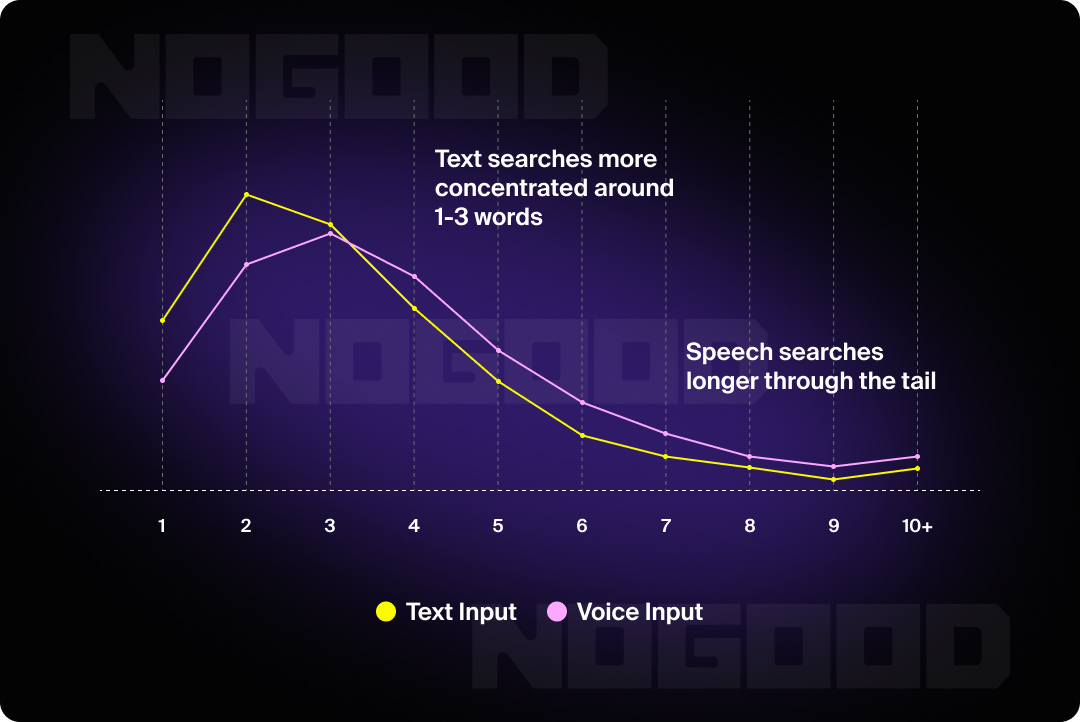
Location-Based Keywords
Suppose your business has a physical location and wants to capitalize on voice search. In that case, it’s imperative that you also use keywords that are phrase-oriented and location-based in nature. Some examples of these would be “Best restaurants near me” or “Closest Gas Station”; these would be used by searchers who are on the go and asking their search-enabled devices for advice at the same time. Looking at location-based keywords is also a good opportunity to re-visit your chosen voice assistants. Whether you are optimizing for Alexa or Siri, the information comes from different sources. Ensure those sources are optimized.
Search Terms as a Resource for Voice Search
Retroactively looking at your search terms report can be a great way to see if people are searching for your business using voice search-enabled devices. These terms will fit the above profile, whether question-based (e.g. ’What is the best restaurant in town?’) or location-based (e.g.’ Restaurants near me’).
You can also use that as an idea for what types of voice search-friendly keywords your user base use and incorporate them into your voice search campaigns.
Voice Search Keywords and Intent
Like with all marketing campaigns, it’s crucial to consider the stage in the users’ journey when building out a voice search campaign. A voice search campaign refers to a set of strategies and tactics aimed at optimizing your content for voice search and improving your visibility in voice search results.
For those users just starting out, their search queries will usually start with queries starting with “who” or “what.” This shows that they’re in the awareness stage and seeking more information in general.
As they progress down the funnel, their queries will shift to use “when” or “where” to gather information about your business and its location along with other pertinent information.
By aligning your voice search strategies with the user’s intent, you can significantly enhance your campaign’s effectiveness and drive better results.
Writing Ad Copy for Voice Search
Ad copy optimized for voice search involves using natural language and ensuring the ad copy is easy to understand. Ads should clearly answer the searcher’s question and provide them with the information they’re looking for without the need for overly technical language.
It’s also essential for voice search to include the proper active extensions to ensure the ad has increased effectiveness. Since many searches take place on mobile devices, it’s important to keep in mind ad extensions that could be handy for a user searching on mobile.
Voice Search Location Targeting
Since most voice searches are for local packs, it’s important to have adequate location targeting set on your voice search ads. Search ad location should be specific to the area your physical location serves and if necessary, ad copy should disclose the areas you serve.
One extension you would want to pay particular attention to and make sure to include would be the call extension — especially if you’re a business with a physical location that may be nearby so that a searcher could easily reach out with any questions they may have.
It’s also important to have a location extension enabled if you have a physical location as well. This makes it easy for a high-intent user to quickly tap the location of your business and navigate toward it. Even if you have your business listed in Google with a contact address, having the location extension allows seamless navigation for the user.
Strategies to Optimize for Voice Search
If you’re going to run campaigns for voice search, it’s important to make sure your website is optimized accordingly to accommodate voice searches. A properly optimized website will lead to higher conversions.
Implement Structured Data
Voice assistants always prioritize following content that is clearly written. They focus on simple data pathways that allow search engines to scan your content. Using schema for voice search will improve your standing and chance that a voice assistant will direct to your content as opposed to your competitors.
Google’s efforts to create a schema specifically for voice search is still in beta. The intent is to add markups that are specifically tailored for applications and voice assistants to easily identify content using text-to-speech. However, since this is still in beta, there’s a high chance Google will make significant adjustments to this feature. In the meantime, you should focus on understanding your current structured data and uncovering any misaligned code deployments.
Create FAQ Pages
Often voice assistants pull answers directly from FAQ pages. These pages are written to be direct, to the point, and direct answers to very specific user queries. This simple format allows the content to be easily collected by search and answer engines.
Write your questions based on user intent. These sorts of questions can be found through searching on Google for topics related to your material and looking at the questions suggested in the People Also Ask part of the SERP.
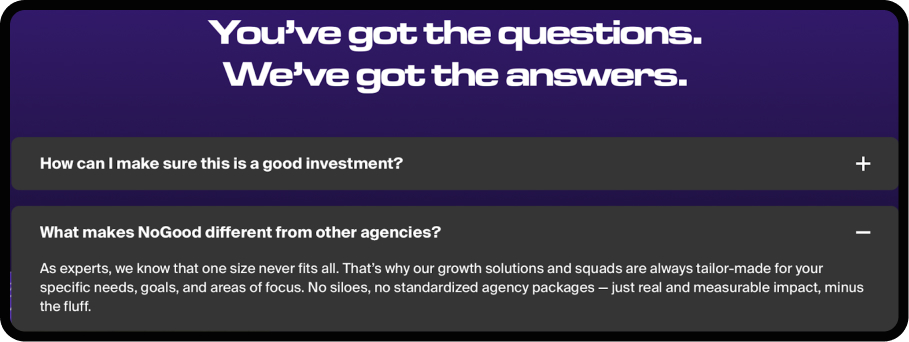
Load Time Optimization
Page loading speed is crucial for SEO and voice search. Most voice searches are done on mobile devices, so fast load times are essential. A study by Backlinko shows that voice search results have a faster Time to First Byte at 0.54 seconds, compared to the average website at 2.10 seconds. Voice search pages also load faster, taking only 4.6 seconds, 52% quicker than the average web page (8.8 seconds).
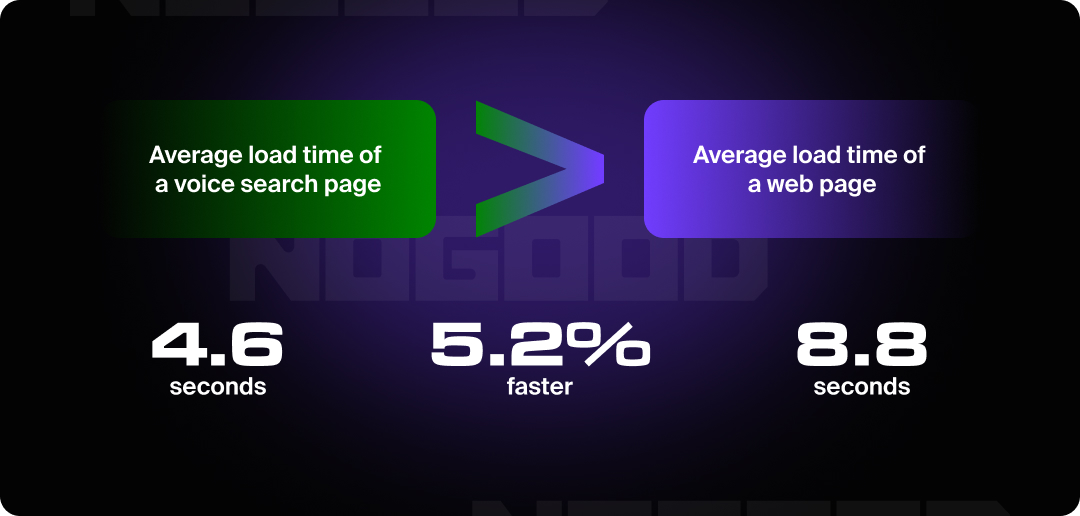
Google is tightening the belt on slow-performing web pages with the introduction of Core Web Vitals. Speed is now a larger ranking factor. Being compliant is only a benefit to voice assistants. The more inactive your website, the less likely Google will rank your brand in voice search.
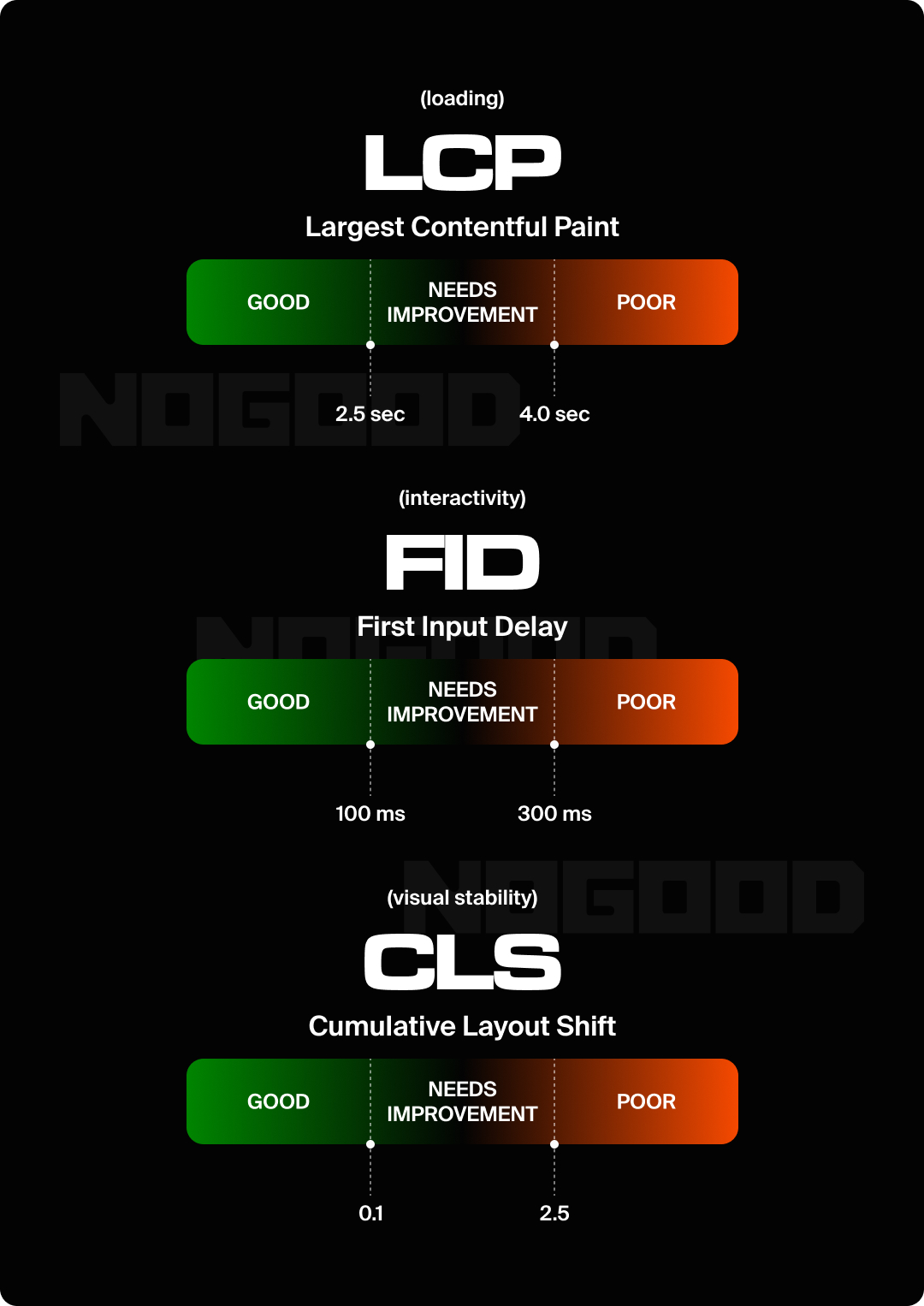
Mobile-Friendly Design
Having a great mobile site layout is crucial for your website’s success in driving voice searchers to convert, especially since most voice searches are performed on mobile devices. To attract those users, make sure your mobile site is optimized for different display sizes and appears clear on various browsers and operating systems.
Local SEO
Since many voice searches are for local information, it can be beneficial to make sure your site has been optimized for local search if it has a physical location. It’s important to make sure that you have your business name, address, and phone number up-to-date and that you have established a Google Business Profile.
If you really want to dive into local SEO, you can create local content and link them to social media backlinks which can help improve rankings by Google.
Content Optimization
Having content that tailors to voice search is also an important facet in improving your website’s optimization. While it doesn’t necessarily mean overhauling every piece of content on your site, you should make sure the content relevant to the voice search is conversational and provides concise answers to the search queries.
Examine the content of the voice search results. Understanding how the ‘voice’ of your content can improve how you communicate value to users and voice assistants looking for information. Human language is important for a lot of reasons in today’s SEO landscape, especially when it comes to voice search and voice assistants. Write the way you speak, and craft your message in a way that is easy to understand. Write your answers like you were talking to a friend.
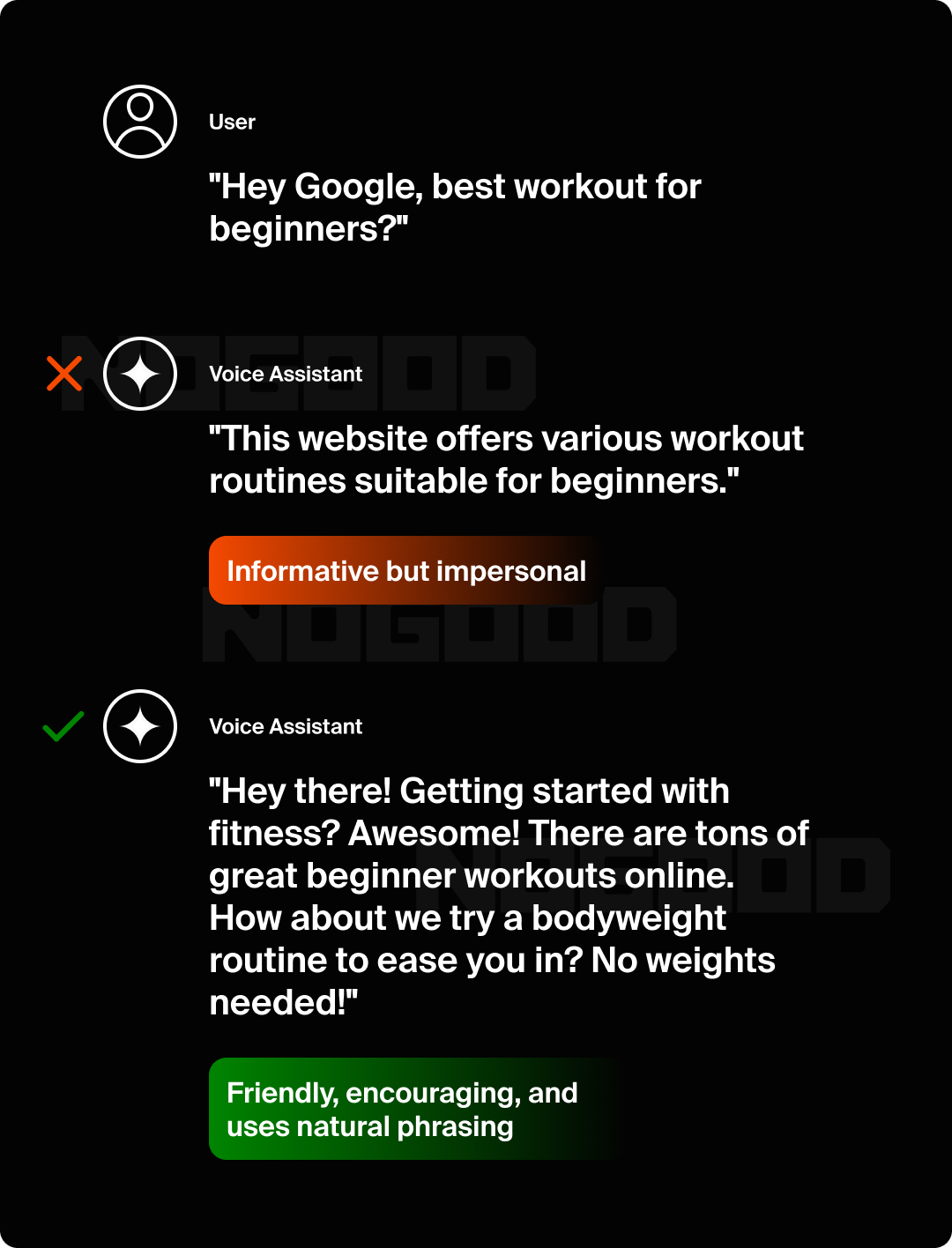
Google’s voice search results are typically limited to 30 characters, so try to include the most important information that would answer the searcher’s question in that limit. A great way to implement this is through FAQ pages, as they provide both the user’s query and a concise answer.
Final Thoughts
Voice search is an important and rapidly developing trend in digital marketing – businesses must understand how to optimize their online presence for voice search, even if they’re not running any paid campaigns tailored to voice search results. Optimizing content can improve your ranking on voice search organically and improve your ranking on other answer engines like ChatGPT or AI Overview.
With the rapidly developing improvements in the capabilities of artificial intelligence and speech recognition software, it’s likely that voice search will continue its trend of popularity. It will increase in adoption as the experience becomes even more user-friendly and the results become even more accurate.
Prefer to speak with a specialist to guide you through voice search optimization?




